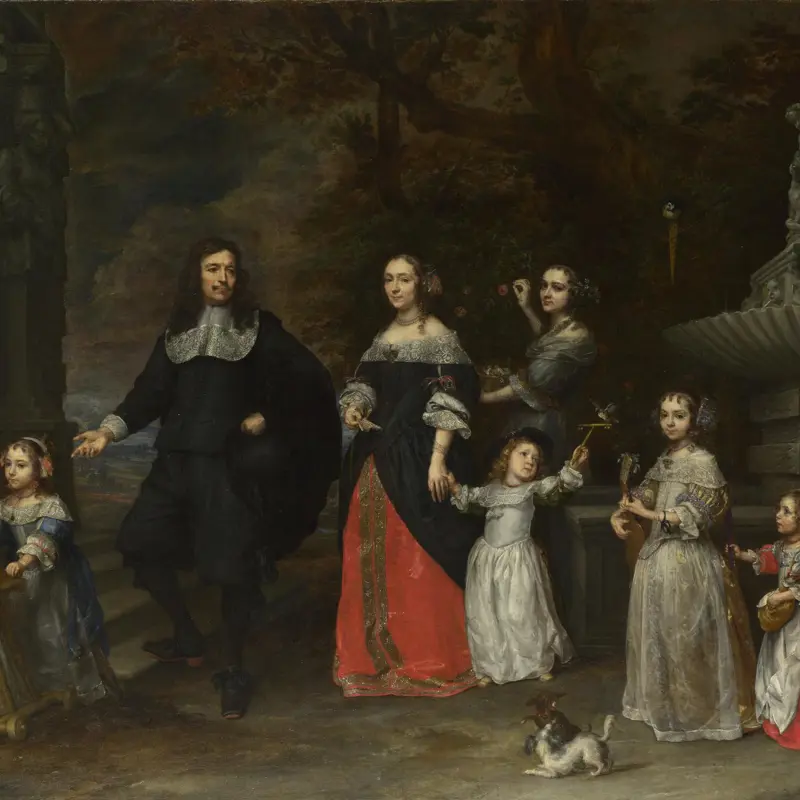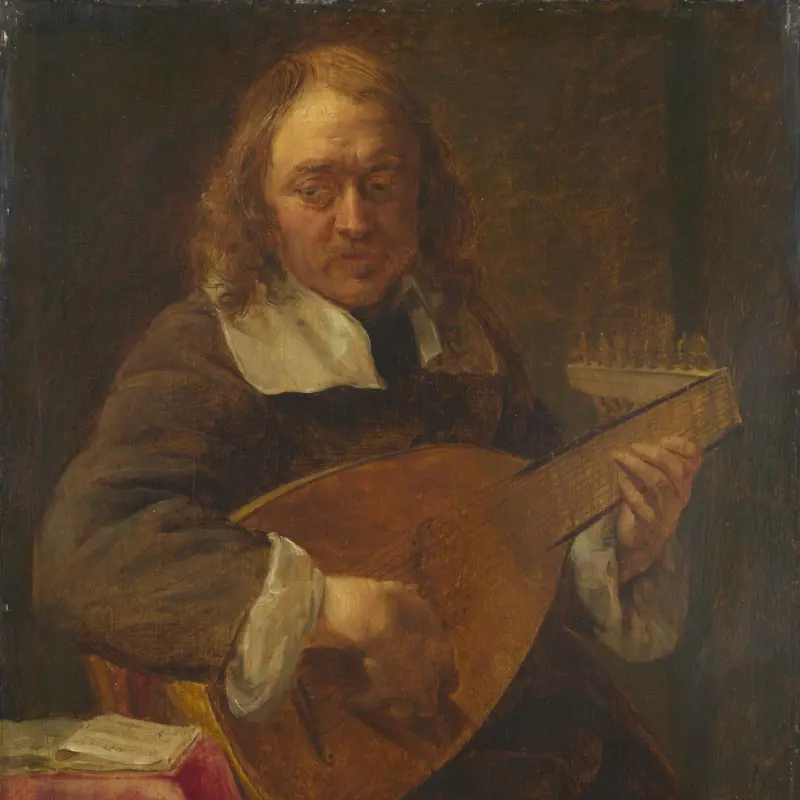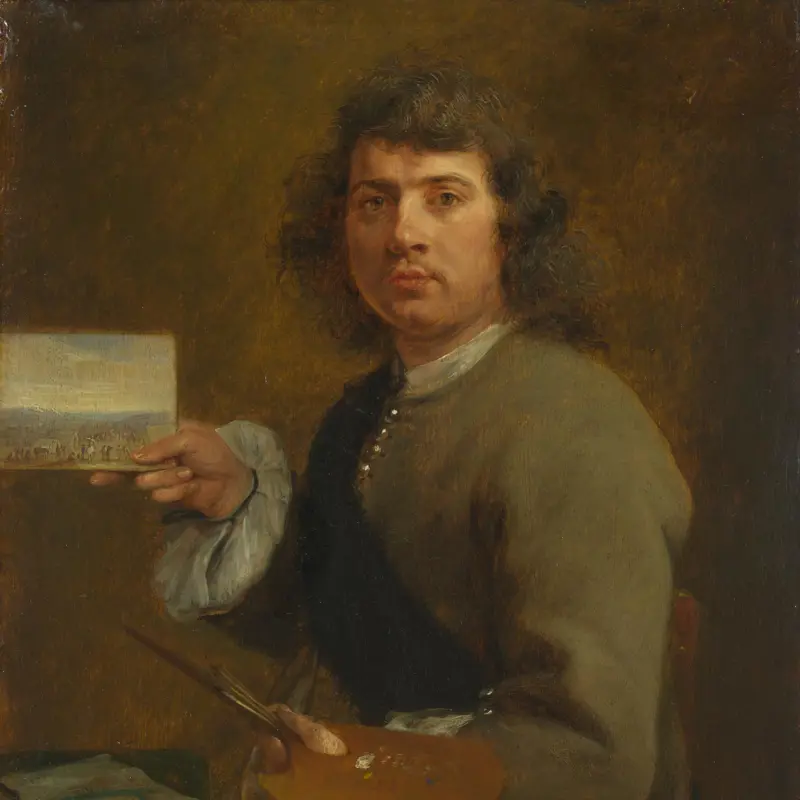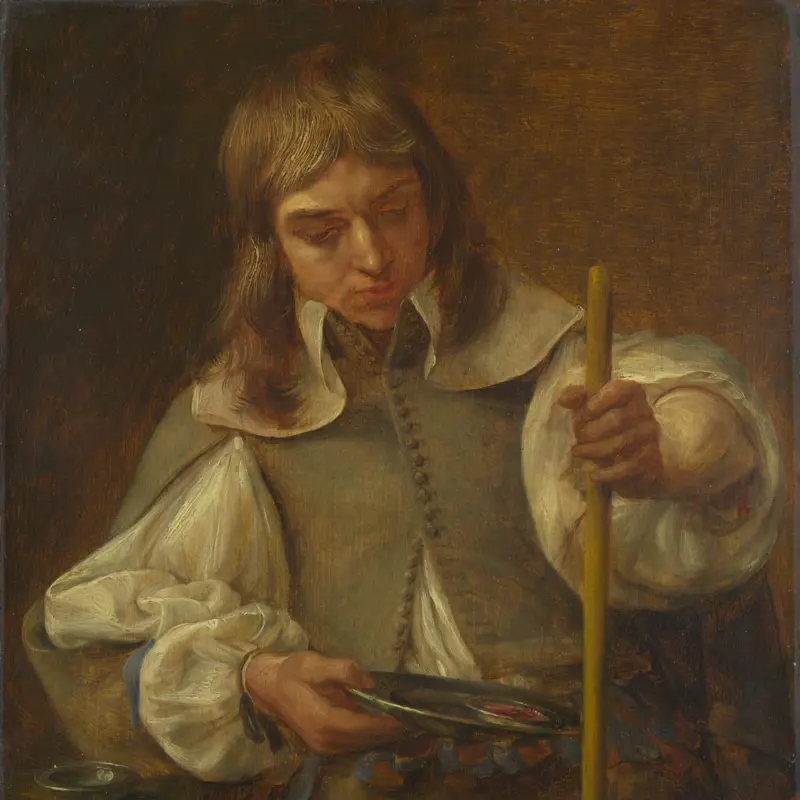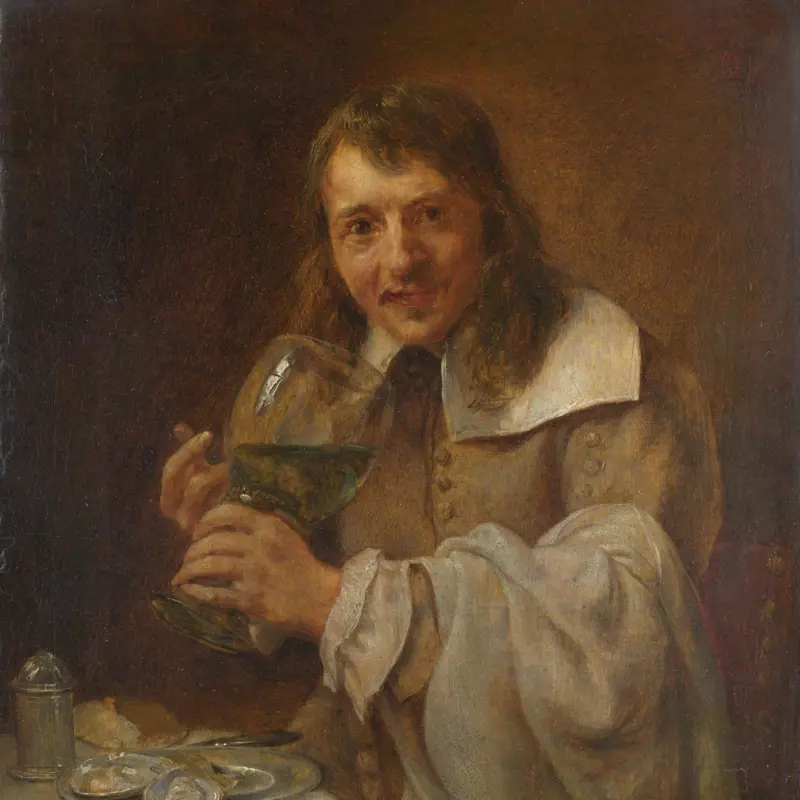Gonzales Coques, 'Portrait of a Man', about 1670
About the work
Overview
The languid brown eyes of a young man gaze out at us, his look faintly quizzical. But who is he? His long hair waves softly about his neck, the shadow of a moustache dusts his upper lip, a wisp of a curl brushes a wide brow, and his full mouth pouts a little, adding to the uncertainty of his expression.
The portrait is a miniature, just over 16 by 12.2 cm. Its delicate oval shape is contained in a heavy, hexagonal Netherlandish frame. In the days before photography, miniature portraits were made of wealthy people for families, friends or for diplomatic contacts.
When the portrait came to the National Gallery in 1910, it had a label on the back stating that the young man was Charles Mordaunt, 3rd Earl of Monmouth. By the time a new catalogue was published in 1915, this identification had been discounted. He was dubbed with the title ‘Unknown’, and there he stays.
Key facts
Details
- Full title
- Portrait of a Man
- Artist
- Gonzales Coques
- Artist dates
- 1614/18 - 1684
- Date made
- about 1670
- Medium and support
- oil on copper
- Dimensions
- 16.1 × 12.2 cm
- Acquisition credit
- Salting Bequest, 1910
- Inventory number
- NG2527
- Location
- Room 15a
- Collection
- Main Collection
- Previous owners
- Frame
- 19th-century English Frame
Provenance
Additional information
Text extracted from the ‘Provenance’ section of the catalogue entry in Gregory Martin, ‘National Gallery Catalogues: The Flemish School: circa 1600–circa 1900’, London 1986; for further information, see the full catalogue entry.
Bibliography
-
1889Burlington Fine Arts Club, Exhibition of Portrait Miniatures, London 1889
-
1960E. Plietzsch, Holländische und flämische Maler des XVII. Jahrh, Leipzig 1960
-
1970G. Martin, The Flemish School, circa 1600-circa 1900, London 1970
-
1981G. de Vuyst, Gonzales Coques, MA Thesis, Rijksuniversiteit 1981
-
1986Martin, Gregory, National Gallery Catalogues: The Flemish School, circa 1600 - circa 1900, London 1986
-
2001
C. Baker and T. Henry, The National Gallery: Complete Illustrated Catalogue, London 2001
About this record
If you know more about this work or have spotted an error, please contact us. Please note that exhibition histories are listed from 2009 onwards. Bibliographies may not be complete; more comprehensive information is available in the National Gallery Library.

